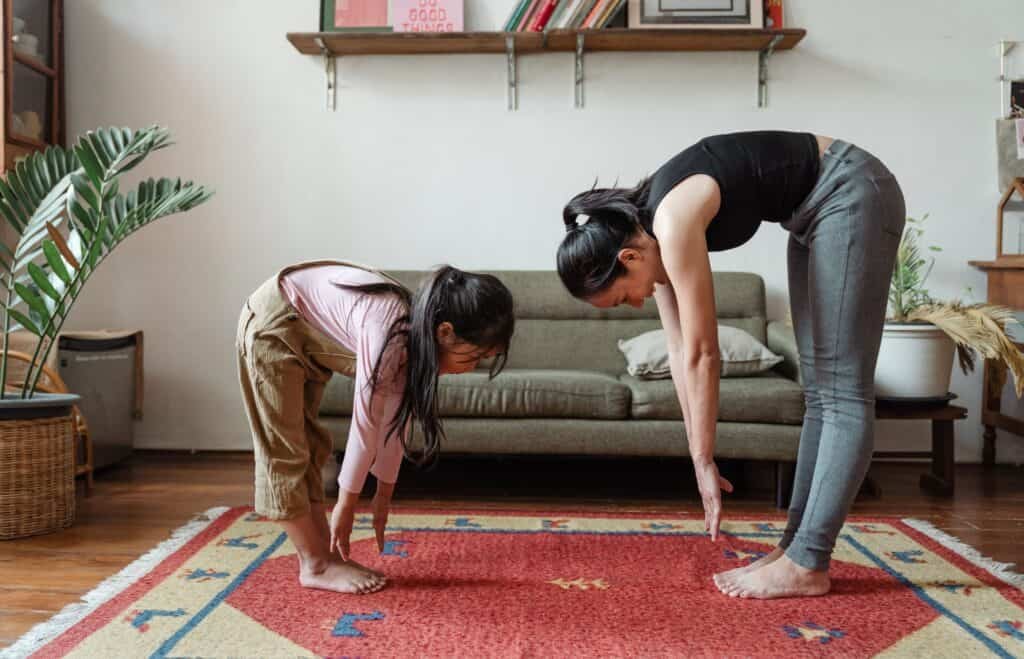The dictionary meaning of the Core is – The most essential part of anything.
Similarly, a strong core is essential in the human body, and the importance of core strength can not be undermined.
In a body, the Core is defined as a set of muscles, the main constituents of which are
- Transverse Abdominis-Deepest ab muscles
- Diaphragm-Muscles that assist in breathing
- Multifidus-Back muscles along the spine
- Pelvic floor – Helps prevent urine flow
- Internal & External Obliques
For a layman, the Core includes
- Muscles that stabilize the hips
- Set of muscles that make up the torso-the front, sides, and back of the body
- Muscles that stabilize the shoulders
Why is core strength necessary?
What is core strength necessary for in your body? For lifelong participation in physical activity? It is your body’s most important muscle group for any physical activity. A strong core muscle group supports your entire body.
They connect the upper part of your body with the lower and help transfer forces from one to another. These are very crucial to any movement in your body. All physical activity depends on solid and stable core muscles, whether swinging or picking, stretching or bending. So, you do need a strong core muscle group for all.
One of the best things you can do is strengthen your midriff as far as the fitness of your body is concerned. There are tons of ways to work on building a solid midriff. Strong core muscles include your abs, obliques, and lower back muscles.
There are various forms of exercises to strengthen all these. However, the best exercises work on more than one part of your abdominal muscles.
Benefits of Strengthening the Core
Physical Activity
Normal Day-to-day activities are done quickly and without extra pressure on any muscle group. Your strong core muscles play a vital role in running also. All the bending and twisting associated with housework will be possible only with a strong midriff.
Strong Lower Back
It makes it easier to pick up, stretch, or twist without any injury. You can even sit, get up, and walk faster with a more muscular lower back.
Sports activities
You can perform sports activities with ease. Your standing, walking, running, and every physical activity depends on your Core. Your endurance, stamina, and speed all increase with your strength. Runners who concentrate on a solid core end up increasing their running speed.
Good posture
You can not undermine the importance of your core strength in improving your posture. Your whole personality depends on your posture, which depends on your core muscles.
If the Core isn’t strong, you cannot stand for long and keep shifting your pressure from one leg to another while standing. Similarly, while sitting, you will keep changing your sitting position. This will also put pressure on different muscle groups, leading to injuries, wrong sitting or standing posture, and tiredness and fatigue.
Body Stability
Your body’s stability is in your core muscles, which saves you from falls and hits while walking and running, especially when growing old. It keeps the body stable and balanced, giving you a better posture and a more robust backbone. It is the center of all your movement.
Better Fitness
A strong core results in better control over other muscle groups and better balance in the body on all muscles, leading to better fitness. Also, a weak heart can injure the spine and lead to shoulder, hips, or knee injuries. In addition, weak core muscles can lead to injuries, fatigue, less endurance, immobility, lower back pain, and poor posture.
What are the best home core exercises?
One does not even need any gym equipment for core exercises. You can do bodyweight exercises at home that are amazing at strengthening these important muscles in your midsection.
Even when you do core exercises that recruit more of one muscle than the others, you’ll notice that you still have to engage your entire midsection to do them right, proving that these muscles are never working completely alone.
Anything that’s balance-related is working on core stabilization. Moves that isolate one side at a time, throwing off your center of gravity, work your Core because you need to brace your midsection to avoid toppling over. Core stabilization requires strength.
Other unexpected movements that engage your Core include jumping because your body has to brace itself against the impact when you land, anything done in a plank position, and compound exercises like squats that engage multiple muscle groups simultaneously.
As you age, your core strength becomes even more critical to stopping pain and maintaining your performance in sports and activities you love and every area of your life.
Caution:
- Before doing any of these core exercises, ensure you have done your warm-up correctly.
- If you feel the tension in your lower back during any of these exercises, stop and reset, ensuring your abs are engaged, and your back is not arched. You can also try starting with fewer reps.
- If you still feel discomfort, skip that exercise and try a different one.
Plank is a core workout to strengthen your Abs
- They improve your posture.
- Help get rid of back pain.
- Your movements are better coordinated.
- Improve your body flexibility.
- They help improve your metabolism.
Plank variations:
Forward Planks
Place your hands under your shoulders, approximately shoulder-width apart. Press your body up with the toes and balls of your feet on the mat and support your weight. Plank for 15 to 30 seconds initially and increase gradually over some time.
Side planks
Lie down on your side with your legs straight. Raise yourself on your right forearm, keeping the body straight – like a diagonal line from your head to your feet. It will help if you elevate your hips and knees off the ground. Rest your left hand on the mat if you need to stabilize yourself.
Reverse planks
Sit with your legs straight with your hands on the mat below your shoulders, pushing your body upwards. Ensure your body maintains a straight line.
There are various other extensions of these planks.
Leg Lowering
Lie on the mat on your back and raise your legs perpendicular to the floor. Slowly lower one leg while keeping the other one perpendicular. Get it close to the mat without touching it. Return it to its position and slowly lower the other leg. Both legs should be straight.
Bridges
Lie on your back on the mat with your hands at your sides. Bring your feet up near your butt. Press your hips until your body weight is balanced between your hips and upper back. Perform bridges in repetitions first and then hold a stationary position.
Bird Dogs
Kneel with your hands positioned under your shoulders. Slowly lower one hand and the opposite leg, returning them to your starting position. Repeat on the opposite side.
Crunches
Lie on your back and bend your knees, keeping your feet flat on the floor. Place your hands behind your head without interlacing your fingers, and pull your abdominals inwards. Lift your head, neck, and shoulder blades off the floor. Hold for a few seconds, and then go back down.
Reverse Crunches:
Lie flat and keep your hands behind your head. Bring your knees inwards, creating a 90-degree angle. Start pulling your legs towards your chest. Now crunch your abs. Hold for a few seconds, then return to the original position.
Crunch Twist:
Keep your knees flat and bend them. Bring your elbow near the opposite knee when you are about to do your first crunch. Hold for a few seconds, then return to your normal position. Try to alternate between the left and right sides.
Bicycle Crunch:
Lie on the mat and keep your back against the ground. Lift one leg and bend it towards the stomach. Replace the leg parallel to the floor and perform a bicycle-like motion movement. One rep is only counted when both your left and right leg have reached your stomach.
Long Arm Crunch:
Lie down and keep your knees bent. Place your hands behind your head and interlace your fingers. Lift the upper part of your body with your hands and hold it for about two seconds. Go back slowly to the initial position.
There are various core exercises, of which I have mentioned only a few here. However, you can start with these and add their variations to your daily routine. The best way is to do each core exercise for 30 seconds and rest for 10 seconds.
Start with a single round of all workouts and keep increasing as you get used to exercises. Subsequently, increase the time for each to 45 seconds and the number of repetitions to three. But do not go by the book in this case.
While attempting any new exercise, you must be careful and consider your body first. If there are any pains in the body, please take advice from a doctor.
In building body strength, the importance of the Core can not be overemphasized. But consistency in the effort is equally important. Unless one is consistent, the results are difficult to come.
FAQs
What is the 5 importance of core strength?
It has many benefits for your health and well-being. Here are five of them:
1. Better balance and stability
2. Improved posture and alignment
3. Reduced back pain
4. Enhanced breathing and digestion
5. More confidence and self-esteem
What are 3 reasons that it is important to have a healthy core?
A healthy core is essential for your overall well-being. Here are three reasons why:
– Supports your spine and prevents back pain.
– Improves your balance and coordination.
– Enhances your breathing and digestion.
What happens when your core is weak?
When your core is weak, you may experience some of the following signs and symptoms:
– Lower back pain
– Lack of power and stability in your upper body
– Difficulty with balance and coordination
– Trouble breathing and digesting
Is the core the most important muscle?
These are extremely important because they:
– Stabilize and protect the spine and pelvis
– Improve balance and coordination
– Facilitate breathing and digestion
Anil’s infectious enthusiasm and wealth of knowledge make him a natural motivator. Through his guidance and support, Anil has helped countless individuals transform their lives, empowering them to lead more vibrant and fulfilling lives.



